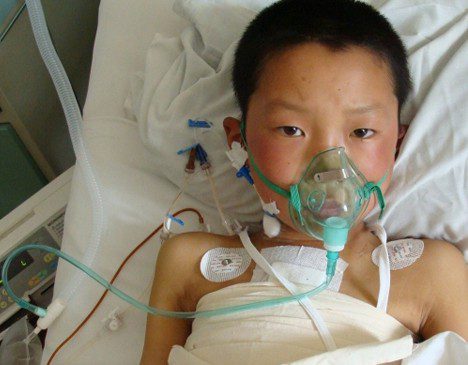
Many children with heart disease who are exposed to radiation during imaging procedures are at greater risk for developing cancer later in their lives. Since an increasing number of children with heart disease now live to adulthood, this risk could become an important public health issue, Forbes reports. A study published in the journal Circulation says […]
 Many children with heart disease who are exposed to radiation during imaging procedures are at greater risk for developing cancer later in their lives.
Many children with heart disease who are exposed to radiation during imaging procedures are at greater risk for developing cancer later in their lives.
Since an increasing number of children with heart disease now live to adulthood, this risk could become an important public health issue, Forbes reports. A study published in the journal Circulation says that although most children have a low increased risk, children who undergo more complex heart procedures face significant increased risk.
Jason Johnson and his co-authors calculated the radiation doses received by 337 children who underwent seven different cardiac surgery procedures at Duke University. The children received a median of 17 radiation-producing imaging procedures, with a median cumulative effective dose of 2.7 mSv (milliSieverts). (This dose is less than the annual background exposure of 3.0–3.5 mSv in the U.S.) But radiation exposure varies widely, according to Forbes. In five of the heart procedures – atrial septal defect, ventricular septal defect, arterial switch operation, tetralogy of Fallot, and atrioventricular canal defect – the radiation dose is “reassuringly low,” the researchers say. But children receive much higher levels of radiation with the two most complex surgeries. The median dose was 20.08 mSv for the Norwood operation and 42.54 for heart transplant. Cardiac catheterizations are a small percentage (1.5%) of all imaging procedures but are responsible for 60 percent of the total radiation exposure.
The study showed that the lifetime risk for cancer due to radiation was more elevated for the Norwood procedure (799 cases per 100,000) and cardiac transplant (1677 per 100,000), according to Forbes. Girls face a significantly higher increased cancer risk because of the impact of radiation on breast and thyroid cancer. The authors say clinicians should try to reduce “radiation exposure in the highest-risk cohorts, including those children who will require repetitive high-exposure imaging and females because of their increased cancer risk.” Relative exposure estimates can help doctors in choosing imaging techniques with the lowest exposure necessary.


